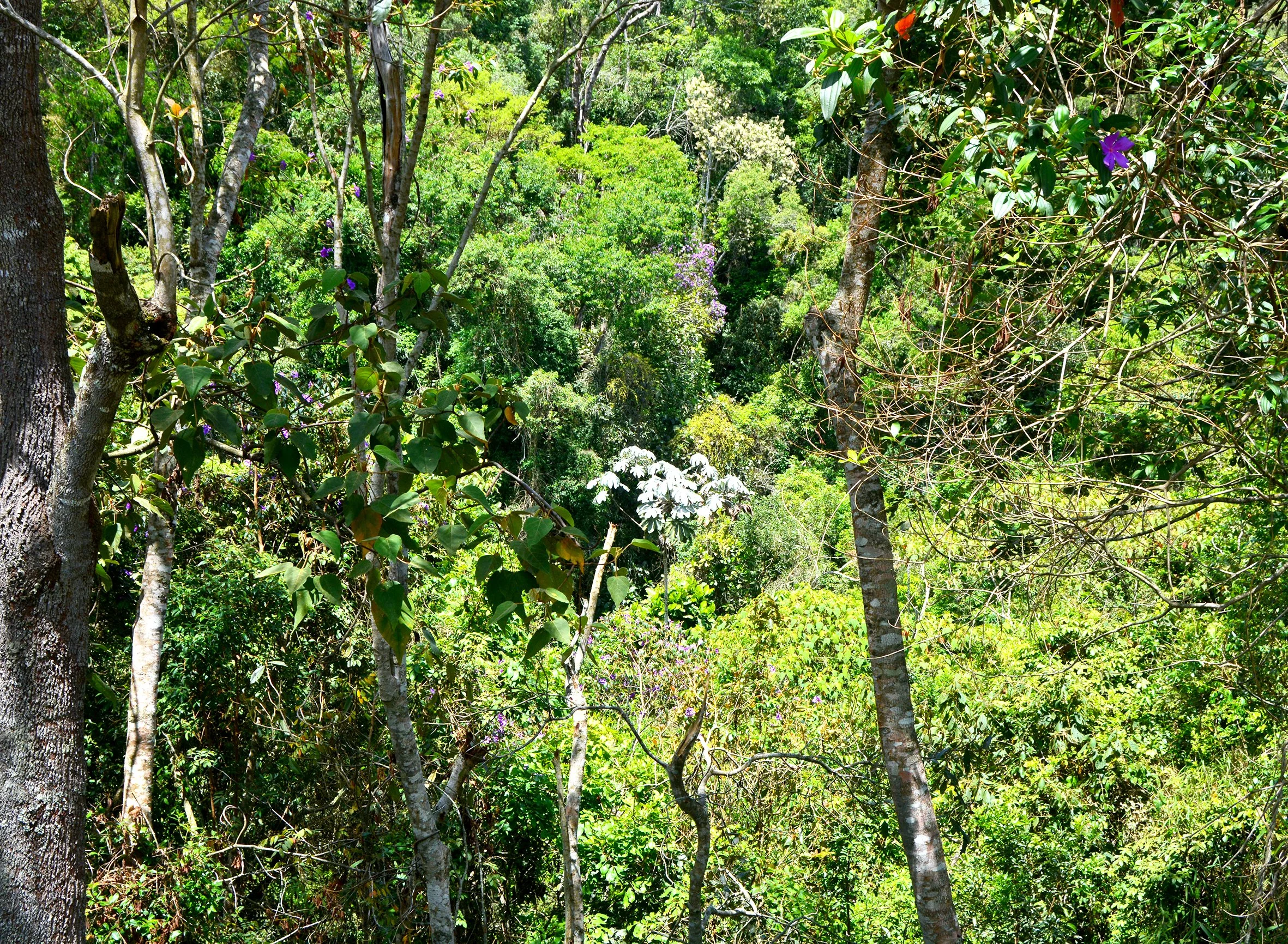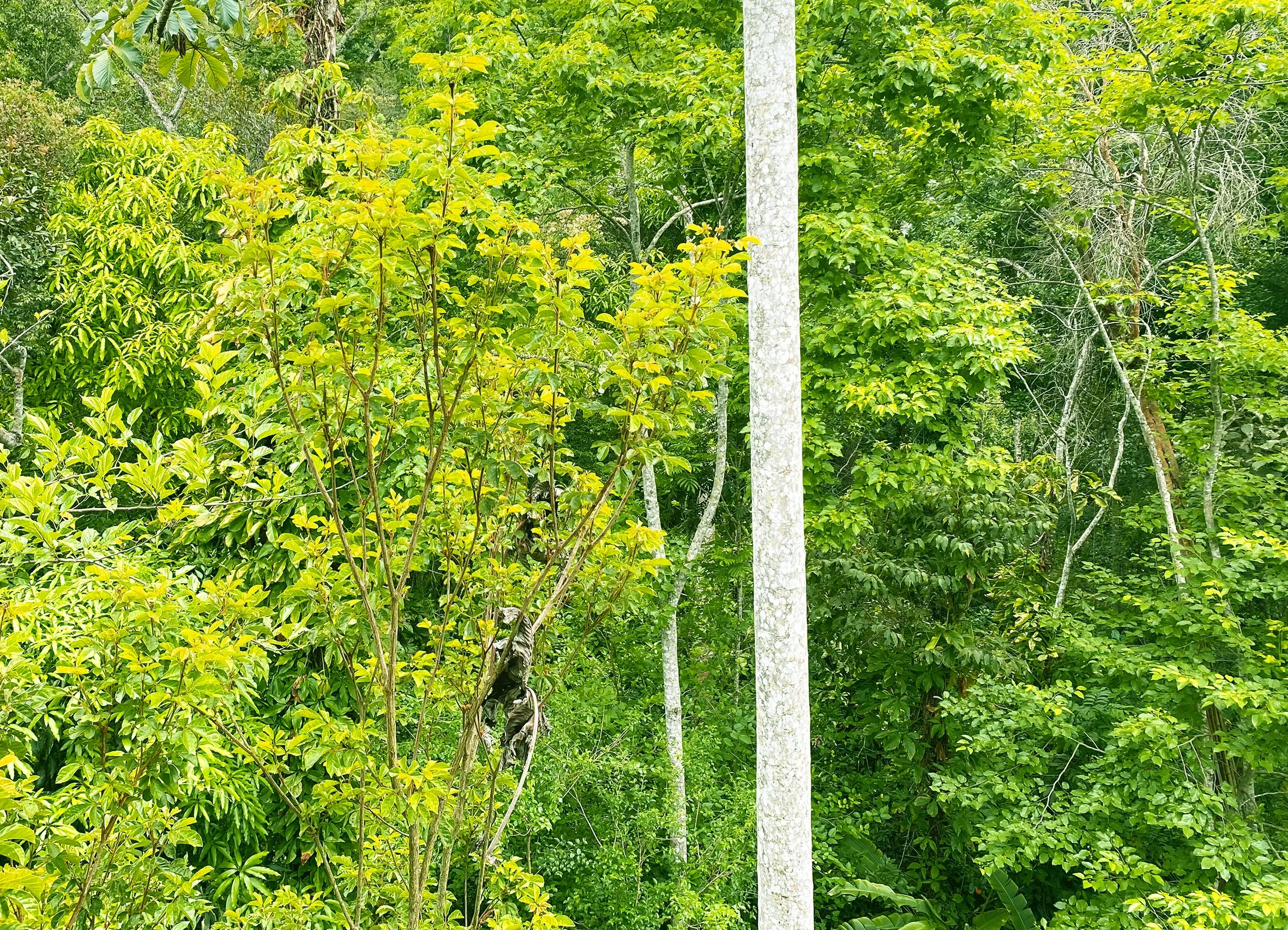Wounded Forest
Yes, it is true, trees, plants and fungi, ‘talk’ to each other. It is one of the many ideas explored in Richard Power’s novel Overstory (2018), an extraordinary discourse on the environmental crisis narrated through nine characters who share an intimate relationship with trees. One of them, Patricia Westerford, activist and passionate believer in plant communication, is based on the scientist Suzanne Simard. A Professor in the Department of Forest and Conservation Sciences at the University of British Columbia, her ground-breaking work on forest ecology and plant intelligence revolutionised how we think about eco-systems. The spectacular Embaúba, in English, the ‘Trumpet Tree’, is a living example. Known as the ‘prata da mata’, ‘silver of the forest’, its distinctive foliage shimmers like a ghostly beacon and it proliferates in woodland areas that are under threat or recovering from deforestation. In this sense, it functions both as an arboreal alert to other species, but also as a signal of potential forest regeneration. Revered for its practical and symbolic value, the Embaúba exists in a symbiotic relationship with ants, birds and insects, providing both food and shelter. Indigenous people use the silver-grey hollow trunk for kindling, whilst the spindly hanging purple-red fruit can be transformed into sweet juices, jams and liquors. Crushed and made into tea, the leaves, that have antioxidant properties, combat infections and pulmonary diseases like asthma and tuberculosis. The miracle tree’s growth cycle is also unusual. It takes a mere five years to reach full height, furiously nourishing and communicating with other fauna and flora, before it unselfishly disintegrates, and returns to the earth.



